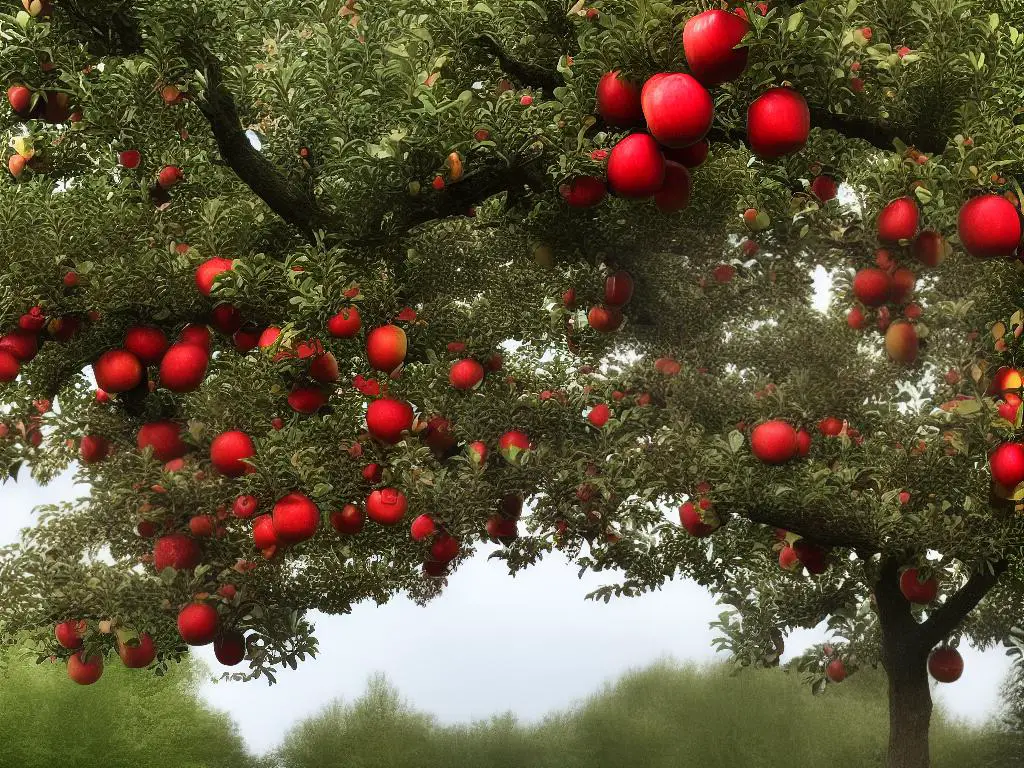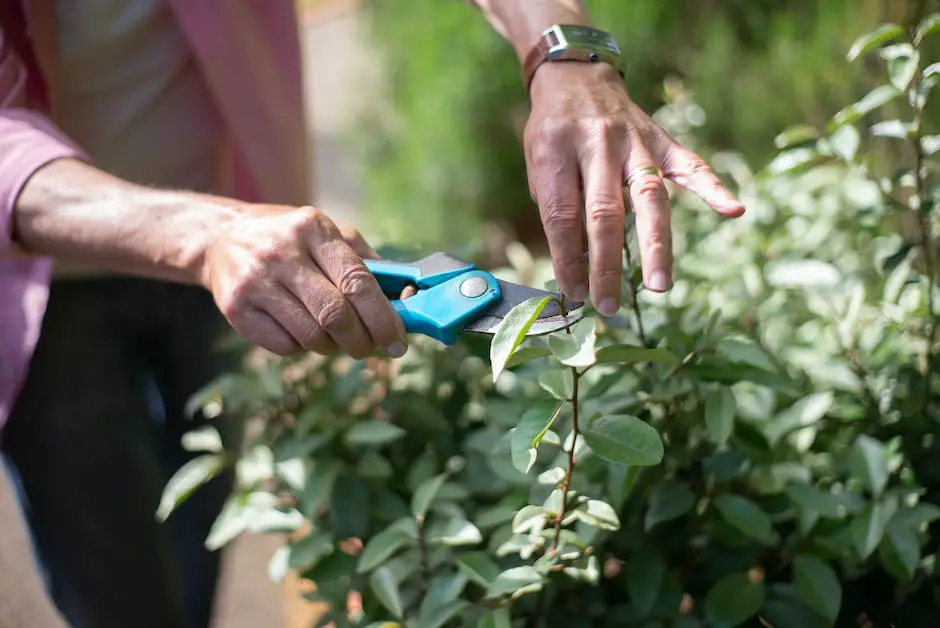Apple trees are a beautiful and fruitful addition to any landscape, providing both visual appeal and a delicious harvest. With proper care and attention, apple trees can thrive and produce for many years. A key aspect of maintaining healthy apple trees is mastering the art of apple tree pruning. This essay delves into the intricacies of understanding apple tree growth, explores various pruning tools and equipment, examines pruning techniques and methods, and provides insights on shaping and training these lovely trees. Furthermore, seasonal pruning and maintenance, as well as case studies and common mistakes, will be discussed to provide a comprehensive understanding of apple tree cutting.
Becoming Skilled in Apple Tree Cutting
To become skilled in apple tree cutting, it is essential to understand the different stages of apple tree growth. The initial phase of growth begins with the formation of the root system, which is crucial for the tree’s ability to absorb water and nutrients from the soil. The roots typically extend horizontally near the soil surface, with primary roots initially extending downward. As the tree grows, primary roots give rise to secondary and tertiary roots, providing a strong anchor and nutrient-absorbing capabilities. Apple tree cutters should be familiar with how the root system develops, ensuring they do not damage these essential structures while pruning or shaping trees.
Another critical aspect of apple tree growth is the development of the trunk and branches. Apple trees undergo a process called ‘branching’ as they mature, dividing their structure into a central trunk surrounded by multiple branches. The trunk and larger branches provide structural support and nutrient transport throughout the tree, connecting the leaves, smaller branches, and fruit to the root system. When cutting or pruning an apple tree, it is crucial to consider the tree’s overall structure and spacing between branches. Apple tree cutters should ensure the central trunk and supporting branches remain intact while removing dead, damaged, or diseased limbs.
Fruit formation is another vital element of apple tree growth that cutters should be familiar with. Apples develop from flowers produced during the blooming stage, typically occurring in spring. The flowers undergo pollination, necessary for fruit development. As the fruit matures, it reaches peak ripeness, indicated by size, color, and firmness. Knowledge of apple fruit development stages benefits apple tree cutters, as it helps them identify the ideal time to prune the tree, maximize fruit production, and improve overall health.
Understanding dormancy’s importance in apple tree growth is also critical for cutters. Dormancy is a period when the tree slows growth and conserves energy, usually occurring during winter. During this time, apple trees require less maintenance and do not need frequent pruning or fertilizing. However, pruning during dormancy can promote a more robust tree and increase fruit production during the growing season. Cutters should be aware of the tree’s dormancy schedule to avoid accidentally disrupting growth patterns.
Lastly, apple tree cutters should be aware of plant hormones that influence the tree’s growth. Auxins, gibberellins, and cytokinins are some of these hormones that regulate aspects such as cell division, elongation, and tissue differentiation. Understanding the complex interactions between hormones can help cutters make informed decisions about pruning, shaping, and overall tree care to achieve optimal tree health and productivity.

Essential Tools for Apple Tree Cutting
In addition to understanding the growth stages and processes of apple trees, having the appropriate tools is also essential. One crucial tool for apple tree cutting is a pair of pruning shears, sometimes referred to as secateurs. These shears come in various types, including bypass, anvil, and ratchet.
Bypass shears feature a curved cutting blade that slides past a fixed lower jaw, making them ideal for precision cuts and minimizing damage to the tree. Anvil shears have a straight upper blade that cuts against a flat lower surface, making them suitable for more rugged work, such as cutting deadwood. Ratchet shears simplify cutting thick branches with a mechanism that allows for multiple squeezes for a single cut. Regardless of the type you choose, it is essential to keep the blades sharp for clean cuts and to prevent spreading diseases among trees.
Loppers
Loppers are another crucial tool for apple tree pruning. These long-handled pruning shears provide extra reach and leverage, allowing you to cut thicker branches than with regular shears easily.
As with pruning shears, loppers come in various styles, including bypass and anvil. When selecting loppers, consider the weight and handle length to ensure they are comfortable to use. Additionally, make sure the cutting capacity matches the size of the branches you plan to prune.
Saws
Saws are necessary when dealing with larger branches or removing deadwood that is too thick for loppers. Pruning saws come in various shapes and sizes, with some featuring a curved blade for maneuvering between branches and making precise cuts. Pole saws, which have a long pole with a saw blade attached, are ideal for reaching high branches without having to climb a ladder. When selecting a pruning saw, consider blade length and teeth size to suit the task at hand. A saw with fewer teeth per inch makes quicker cuts but may result in rougher edges, while a saw with more teeth per inch provides smoother cuts but might require more effort.
Pole Pruners
Pole pruners, combining the benefits of loppers and saws, offer both a cutting blade and a saw blade at the end of a long pole. These versatile tools allow you to reach high branches while standing on the ground, reducing the risk of falls. Some pole pruners come with a telescoping handle, making it easier to adjust the length to reach different heights. To ensure optimal performance and safety, regularly inspect your pole pruner for wear and damage, and replace any worn parts.
Proper Tool Maintenance
Before diving into apple tree pruning techniques, it’s important to first understand the significance of proper tool maintenance. Taking good care of your equipment not only prolongs its life, but also prevents the spread of diseases between trees. Make sure to clean and disinfect your tools after each use, removing sap, debris, and potential pathogens. Additionally, sharpen blades regularly with a whetstone or sharpening tool to reduce strain during cutting, and oil moving parts to prevent rust and ensure smooth operation. Remember to always wear gloves and protective eyewear when working with pruning tools, and follow safe working practices, such as using a ladder or scaffolding for tall trees and having a spotter present to help with stability.

Apple Tree Pruning Techniques
With your well-maintained tools in hand, you are now ready to explore the essential pruning techniques and methods crucial for maintaining the health and productivity of apple trees.
Heading back cuts is a common method used for fruit-bearing trees, which involves removing part of a shoot or limb to stimulate lateral bud growth for a bushier, more compact structure. For apple trees, this technique helps develop a strong central leader branch, promoting a desirable shape and directing growth as preferred.
Thinning cuts, in contrast, focus on enhancing air circulation and light penetration within the tree’s canopy. To perform thinning cuts, completely remove a branch or shoot at its origin. Ideally, focus on smaller branches, less than two inches in diameter, to prevent excessive ‘sun scald’ on exposed bark. Thinning cuts also serve to eliminate problem branches that are too close together, dead, diseased, or causing friction with adjacent branches, thereby preventing weakened limbs and potential future damage.
Lastly, bench cuts target fruit-producing spurs specific to apple trees. Performing a small horizontal cut above a well-placed lateral bud, this technique encourages new branch or spur growth. A balance of new and old fruiting spurs helps maintain a steady fruit production cycle, ensuring healthy, high-quality apples.
Timing
The timing of when these pruning methods are implemented also plays a critical role in the overall health and productivity of apple trees. Generally, apple trees should be pruned during the dormant season, between late winter and early spring. This prevents unnecessary stress on the tree and allows for easier identification of diseased or overly vigorous branches. However, it is important to avoid pruning during extremely cold or wet weather, as it can result in weakened wood and increased susceptibility to disease.
Conclusion
Utilizing a combination of heading back cuts, thinning cuts, and bench cuts while shaping and training apple trees will promote a strong and stable structure, healthy growth, and increased fruit production. Each tree requires individual assessment to determine the appropriate pruning and training methods. Using sharp, clean tools and sanitizing them between cuts can help prevent the spread of diseases. By employing proper pruning techniques, enthusiasts and hobbyists can maintain their apple trees’ health, extend their productive lifespan, and ultimately enjoy a bountiful harvest.
